As someone who has dabbled in machine learning and AI programming, I understand the importance of finding the best laptop for this specific purpose. With the rapid advancements in artificial intelligence, selecting the ideal machine can make a significant difference in your productivity and the efficiency of your projects. This guide is dedicated to helping you identify the best laptop for machine learning and AI programming, ensuring that you're equipped with a powerful device to tackle complex algorithms and large datasets.
In my quest to find the perfect laptop, I reviewed an extensive spreadsheet of recent releases, comparing specs and reviews from both professionals and users alike. By narrowing down the top laptops based on activity-specific requirements and various price ranges, this guide aims to provide valuable insights for fellow machine learning enthusiasts and AI programmers. Whether you're working on neural networks, natural language processing, or computer vision, having the right hardware can greatly enhance your experience and streamline your workflow.
While working with machine learning libraries like TensorFlow or PyTorch, I've come to realize that the best laptop for AI programming should have a robust CPU, a dedicated GPU, ample RAM, and fast storage. These components not only ensure smooth multitasking but also provide the necessary horsepower to train, test, and deploy your AI models. Additionally, having a high-quality display and ergonomic keyboard can significantly improve your overall programming experience. With these factors in mind, our guide will help you find the perfect laptop tailored to your machine learning and AI programming needs.
Machine Learning and AI Programming Laptops: Your Questions Answered
Q: What are the best laptops for machine learning and AI programming?
When it comes to machine learning and AI programming, you want a laptop that can handle the demanding computational tasks involved. Some of the best laptops in the market for these tasks include the HP Victus, ASUS TUF F15 FX507ZM-ES74, Lenovo Legion 5 Pro, ASUS ROG Strix Scar, Lenovo Legion Pro 7i 16, and Dell XPS 17 9720. These laptops offer a range of specifications and price points to cater to different needs and budgets.
What are the recommended specs for a laptop for machine learning and AI programming?
The recommended specs for a laptop for machine learning and AI programming include a powerful processor, a dedicated GPU, and ample memory. For the processor, options like the AMD Ryzen 5 5600U, Intel i5-11500H, or even the higher-end i7 or i9 processors would be ideal. In terms of graphics, a GeForce RTX 3060 or even a higher-end GeForce RTX 2080 SUPER would provide the necessary graphical processing power. As for memory, it is recommended to have at least 32 GB, but if you're working with larger datasets or more complex models, 64 GB would be even better.
Can I use a MacBook for machine learning and AI programming?
While MacBooks are known for their sleek design and user-friendly interface, they may not be the most suitable choice for machine learning and AI programming. Most MacBook models come with integrated graphics, which can limit their ability to handle the intense computational demands of these tasks. Additionally, the limited upgradability of MacBooks may pose a challenge when it comes to expanding your system's capabilities. If you are serious about machine learning and AI programming, it's recommended to explore other options that provide more customization and power.
What is the minimum RAM requirement for machine learning and AI programming on a laptop?
Machine learning and AI programming can be memory-intensive tasks, so it's important to have enough RAM to handle the workload efficiently. The minimum RAM requirement for these tasks would be 16 GB. However, if you're working with larger datasets or running complex models, it's highly recommended to opt for at least 32 GB of RAM to ensure smooth performance and avoid any potential bottlenecks.
Is a dedicated GPU necessary for machine learning and AI programming on a laptop?
Yes, a dedicated GPU is highly recommended for machine learning and AI programming on a laptop. These tasks involve heavy calculations and data processing, which can benefit greatly from the parallel processing capabilities of a dedicated GPU. A dedicated GPU, such as the GeForce RTX series, provides the necessary computing power to accelerate training and inference processes, resulting in faster and more efficient performance.
Can I use a budget laptop for machine learning and AI programming?
While it's technically possible to use a budget laptop for machine learning and AI programming, it's important to consider the limitations that come with it. Budget laptops generally have less powerful processors, limited RAM, and weaker graphics capabilities. These limitations can significantly impact the performance and efficiency of machine learning tasks. If you're just starting or working with smaller datasets, a budget laptop could suffice. However, for more demanding projects or larger datasets, it's highly recommended to invest in a laptop with higher specs to ensure a smoother and more productive workflow.
Are there any specific processor requirements for machine learning and AI programming on a laptop?
When it comes to machine learning and AI programming, having a powerful processor is crucial. While there are no specific processor requirements, it is recommended to use at least an i5-11500H processor or equivalent as a minimum. However, if you have the budget, upgrading to a more powerful processor, such as an AMD Ryzen 5 5600U or even an i7 or i9 processor, would provide better performance and faster processing speeds, allowing you to work more efficiently.
What are the storage requirements for machine learning and AI programming on a laptop?
Storage requirements for machine learning and AI programming on a laptop can vary depending on the size of your datasets and the type of projects you work on. It's recommended to have a minimum of 512 GB of storage to accommodate your operating system, development tools, and datasets. However, if you work with larger datasets or require more storage space for various projects, opting for 1 TB or even higher capacity SSDs would be a wise choice to ensure you have enough room for your data without sacrificing performance.
Which operating system is best for machine learning and AI programming on a laptop?
When it comes to the operating system for machine learning and AI programming on a laptop, both Windows and Linux are widely used and supported. Windows offers a user-friendly interface and a wide range of software and tools specifically designed
6 Best Laptops for Machine Learning and AI Programming

1.HP Victus
HP Victus: A powerful gaming laptop with some display limitations.- Delivers smooth gameplay at 1080p.
- Fast SSD.
- User-replaceable memory and storage.
- Good port selection.
- No VRR to reduce screen tearing.
- Some performance loss on CPU under load.
Summary
The HP Victus is a powerful gaming laptop with Intel 12th Gen. CPUs and NVIDIA discrete graphics that deliver smooth gameplay at 1080p. It has a fast SSD and good port selection, but its 144Hz display has a slow response time causing noticeable ghosting and it lacks variable refresh rate (VRR) to reduce screen tearing.
Reviews
Alternatives

MSI FHD
- Extremely affordable
- Capable in mid-range games
- Rivals are routinely faster
- Single-channel memory

2.ASUS TUF Dash F15
ASUS TUF Dash F15: Powerful and affordable laptop for Machine Learning and AI programming.- Lightweight and well-built
- Good display options (FHD 300Hz and QHD)
- More powerful than previous generation
- Competitively priced
- Quirks affecting everyday ergonomics
- Ports squeezed together on the left edge
- Careful about the FHD 144Hz panel option
Summary
The ASUS TUF Dash F15 is a powerful and well-built laptop that offers great performance for Machine Learning and AI programming. It is lightweight, competitively priced, and has good display options. However, there are some quirks and it is recommended to avoid the FHD 144Hz screen option.
Reviews
Alternatives
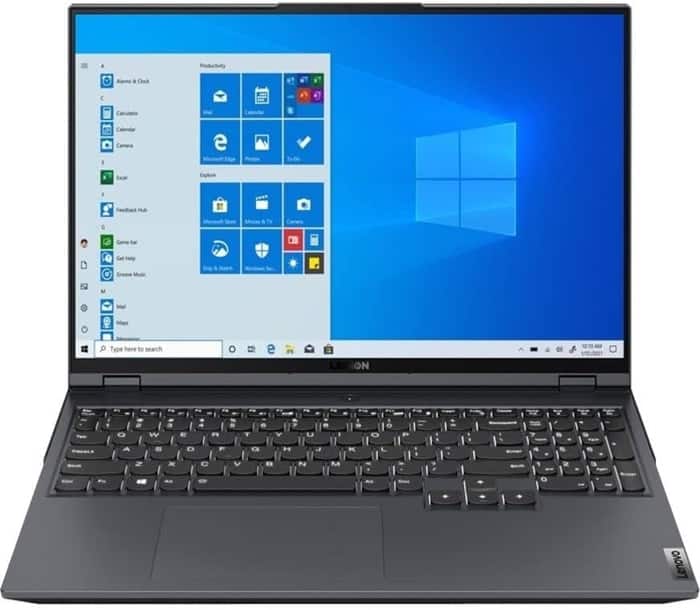
Lenovo Legion 5i Pro 16
- Stylish and sleek form factor
- Gorgeous display
- Webcam quality is poor
- No biometrics

3.HP Envy 16
HP Envy 16: A powerful and feature-packed laptop for machine learning and AI programming.- Plenty of CPU and GPU power
- New 120Hz screen refresh rate
- High-res webcam
- Sleek design
- Merely adequate base screen
- Optional OLED has fewer pixels than before
- Bulky and heavy
Summary
The HP Envy 16 offers plenty of CPU and GPU power, a high-refresh display, and a high-res webcam, making it a tempting choice for machine learning and AI programming. However, the laptop is bulky and heavy, and the base screen is only adequate.
Reviews
Alternatives
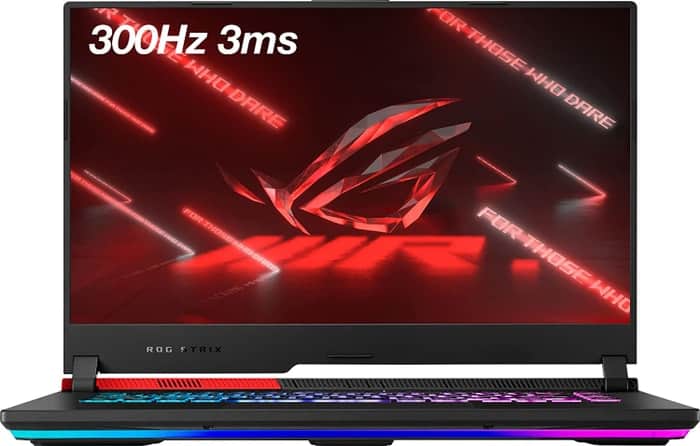
ASUS ROG Strix G15
- Powerful CPU and GPU performance
- Solid construction and good workmanship
- Limited connectivity options
- Occasional coil whine
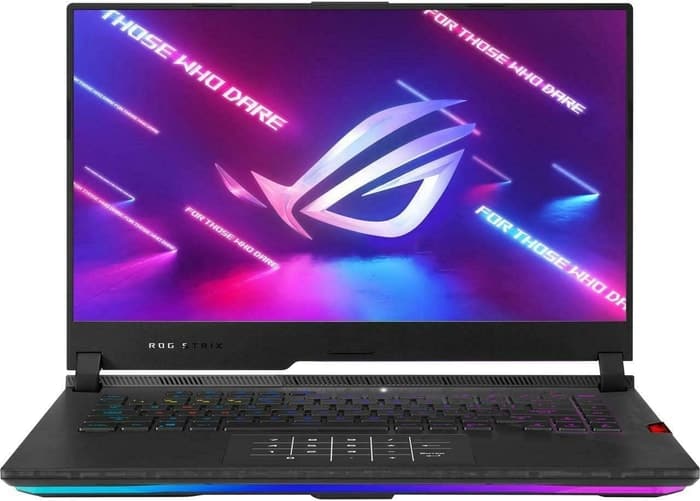
4.ASUS ROG Strix Scar
ASUS ROG Strix Scar: Powerful performance with some trade-offs.- Sturdy construction
- Fast Wi-Fi 6E
- Excellent response times and no PWM
- Wide color gamut coverage with Dolby Vision support
- Limited display angle
- No biometric login
- Heavy SSD throttling during continuous reads
- High heat and noise emissions under load
Summary
The ASUS ROG Strix Scar offers powerful performance with its Core i9-12900H and RTX 3070 Ti, making it a great choice for machine learning and AI programming. However, it falls short in areas such as display angle, biometric login, SSD throttling, heat and noise emissions, and battery backup.
Reviews
Alternatives
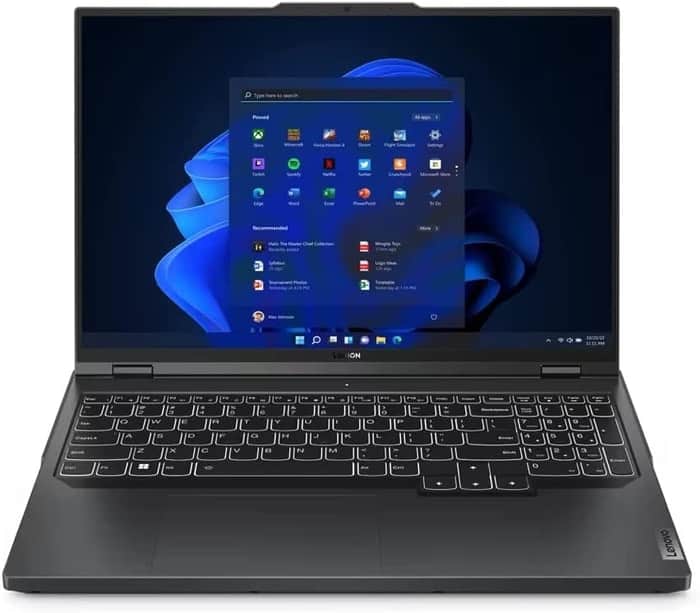
Lenovo Legion Pro 5
- Fantastic value
- Top-tier gaming performance
- Middling screen
- A bit heavy

5.Lenovo Legion Pro 7i 16
Lenovo Legion Pro 7i 16: A mid-priced powerhouse for Machine Learning and AI programming.- Strong overall performance
- Display is big, bright, and fast
- Per-key RGB lighting
- Some flex to keyboard deck
- Poor battery life
Summary
The Lenovo Legion Pro 7i 16 is equipped with a powerful 13th-gen Core i9 CPU and RTX 4090 graphics, making it a strong choice for Machine Learning and AI programming. Its big, bright, and fast display, along with per-key RGB lighting, add to its appeal.
Alternatives

HP Omen 17
- QHD display with 165 Hz
- Expandable working memory
- Slightly below-average performance for a RTX 4080
- High noise level

6.Dell XPS 17 9720
Dell XPS 17 9720: Powerful machine learning and AI programming laptop with excellent 4K display, but lacks in graphics performance and cooling.- Excellent 4K display with AdobeRGB
- High-quality case
- Thunderbolt 4 PCIe 4.0
- Very high system performance
- Lower graphics performance than the predecessor
- Performance not completely stable under combined load
- Not Wi-Fi 6E compatible
- 720p webcam
Summary
The Dell XPS 17 9720 is a powerful laptop for machine learning and AI programming, featuring an excellent 4K display with AdobeRGB and high-quality case. It offers very high system performance, Thunderbolt 4, and PCIe 4.0. However, it falls short in graphics performance compared to its predecessor and has slightly weak cooling.
Reviews
Alternatives
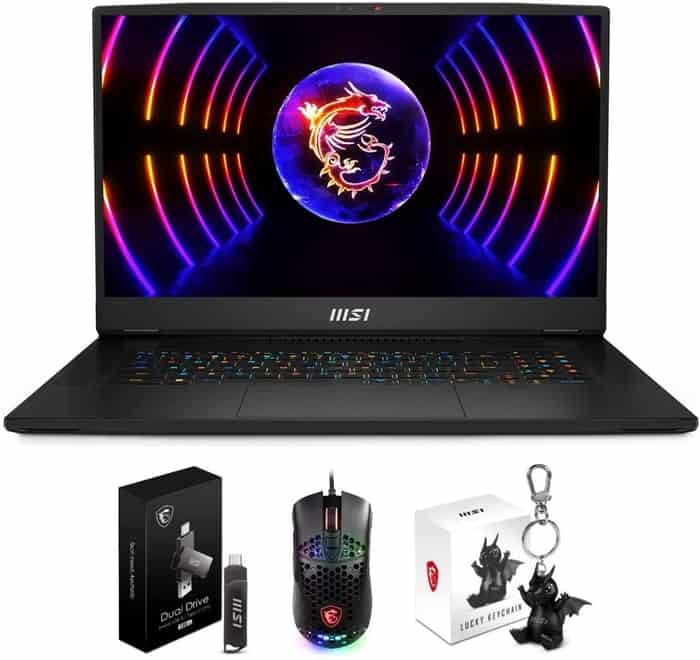
MSI Titan GT77HX 13VH-046US
- Excellent mechanical keyboard
- Class-leading Mini-LED display
- Uninspired design
- Short battery life
Power Up Your AI Programming with These Processors

Machine learning and AI programming require a powerful processor to handle the complex computations. In this section, we'll discuss how to choose the right processor for your machine learning needs.
What's new in the world of processors?
Apple's ARM-based M1, M2, M2 Pro, and M2 Max system-on-chip modules are receiving a lot of attention for their exceptional single-core performance and battery life. Meanwhile, AMD has captured a significant portion of the laptop CPU market with its latest 7th-generation Ryzen processors. Intel's 13th-generation Core processors are already released, but the 12th-generation Core CPUs can provide excellent value for those who don't need cutting-edge performance.
How much do you need for machine learning?
The CPU is the most important component when it comes to machine learning. If you're looking for a Windows laptop, then you should select laptops with H-series processors (e.g., "H" or "Ryzen R") since they offer the best performance per watt ratio for machine learning.
Do you need a high-end CPU for machine learning?
A high-end CPU will undoubtedly improve machine learning performance, but it may not be necessary for everyone. If you're just starting, you can get by with an i5 or Ryzen 5 processor, but it won't perform as well as a more expensive CPU.
Processor benchmarks
When comparing CPUs, we use Cinebench and PassMark scores to compare laptop processors because they are more relevant to machine learning than generic benchmarks that include gaming and other applications.
Table of recommended processors for various budgets
| Budget | Processor |
|---|---|
| Minimum | Intel Core i5-11320H |
| Mid | AMD Ryzen 5 5600U |
| High | Intel Core i5-11500H or equivalent |
If you're looking for a budget option, make sure you get at least an Intel Core i5 or Ryzen 5 processor; anything less will result in subpar performance in machine learning applications. For mid-range budgets, we recommend the AMD Ryzen 5 5600U. Finally, for high-end budgets, we suggest an Intel Core i5-11500H or an equivalent processor. Remember that you don't have to break the bank to get a laptop with a suitable CPU for machine learning; you can find some fantastic deals if you know where to look.
The power behind the programming: Graphics card essentials
When it comes to machine learning (ML) and AI programming, having the right graphics card can make all the difference in your workflow. As Nvidia continues to dominate the laptop GPU market, there are several factors to consider when deciding on the right graphics card for your needs.
First, it's essential to understand where the current GPU market stands. Nvidia's latest RTX 40 series cards are hitting the shelves, but the RTX 30 series still dominates the notebook GPU market. Additionally, the gap between power-limited notebook graphics and desktop graphics cards has widened in recent years due to more power-hungry desktop GPUs.
In terms of ML, a dedicated graphics card is not necessary, but it can speed up some training times. However, if you're a gamer, a dedicated GPU is necessary for optimal performance. Integrated GPUs will suffice for most ML applications.
For those on a budget, Nvidia's previous generation of graphics cards is still a viable option for ML work. To compare different GPUs, I recommend using 3DMark, which provides a good indication of performance without relying on synthetic tests that can be gamed by AI developers who know how to optimize their code to leverage the CPU.
Finally, for those looking for a high-end laptop that can handle gaming and ML simultaneously, make sure it has enough power delivery or "Max Power Delivery" in Lenovo parlance, so that the CPU and GPU can deliver their full potential simultaneously.
Based on these factors, here are my recommendations for each price bracket:
- Minimum: GeForce RTX 3050
- Recommended: GeForce RTX 3060
- High-end: GeForce RTX 2080 SUPER
Overall, finding the right graphics card for your ML needs depends on several factors, including budget, performance requirements, and power delivery. With these considerations in mind, you can find the perfect GPU for your ML workflow.
Boost Your AI Performance with These RAM Specs
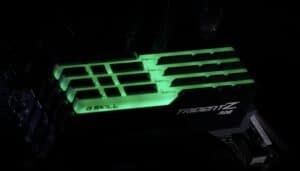
As Machine Learning and AI Programming are memory-intensive tasks, having enough RAM in your laptop is essential. However, simply looking for a laptop with 16 GB of RAM won't cut it. You must understand the difference between single-channel and dual-channel memory, as well as DDR4 vs. DDR5.
DDR4 is the most common type of RAM and is supported by most current-gen Intel and AMD CPUs. In comparison, DDR5 is still expensive and needs time to mature as a technology. Most mid-range laptops come with 16 GB of RAM, and high-end ones have 32 GB or more.
If you're working with large datasets or using deep learning frameworks that rely on GPU acceleration (e.g., TensorFlow), you'll need at least 32 GB of RAM. These frameworks use all available memory bandwidth when working with large datasets or performing inference on the GPU. Thus, it's crucial to have enough memory to avoid bottlenecks.
When choosing RAM, you must consider whether the laptop has single-channel or dual-channel memory. Dual-channel memory performs better than single-channel memory, as it allows for twice the bandwidth. If you're unsure which one your laptop has, consult your laptop's manual or manufacturer website.
Here's a list of recommended configurations for various price brackets:
| Price range | Recommended RAM |
|---|---|
| Budget (under $1000) | 16 GB DDR4 (single-channel) |
| Mid-range ($1000 – $2000) | 32 GB DDR4 (dual-channel) |
| High-end ($2000 and above) | 64 GB DDR4 (dual-channel) |
In conclusion, having enough RAM in your laptop is crucial for Machine Learning and AI Programming tasks. If you're working with large datasets or deep learning frameworks that rely on GPU acceleration, it's best to have at least 32 GB of RAM. Also, remember to choose a laptop with dual-channel memory for better performance.
Table of the Best Laptops for Machine Learning and AI Programming
| Laptop | Price (approx) |
| HP Victus | $900 |
| ASUS TUF Dash F15 | $1,160 |
| HP Envy 16 | $1,950 |
| ASUS ROG Strix Scar | $2,050 |
| Lenovo Legion Pro 7i 16 | $3,390 |
| Dell XPS 17 9720 | $5,600 |





